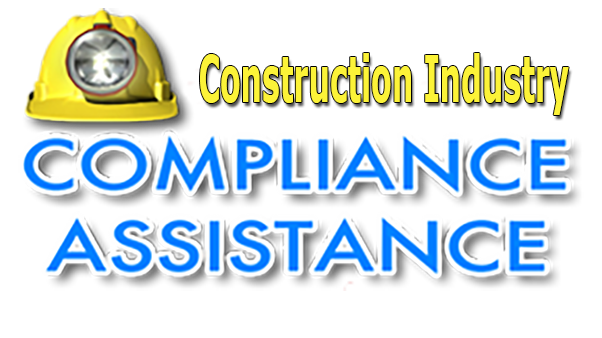
Process Wastewater
Introduction
Discharges of wastewater from construction activities are regulated under the U.S. Environmental Protection Agency’s (EPA’s) Construction and Development Effluent Guidelines and Standards (C&D Rule). The regulations apply to all construction sites that are subject to NPDES permit requirements (sites with one or more acres of land disturbance, or sites disturbing less than one acre but are part of an overall development plan). All NPDES permits issued to regulated construction sites, either by EPA or an authorized state, must address the requirements of the C&D Rule. The C&D Rule addresses pollutants discharged in stormwater runoff as a direct result of land disturbing activities, as well as discharges from other related activities that generate process wastewater, including:
- concrete washout (washout of concrete truck chutes, tools, etc.),
- equipment and vehicle washing,
- dewatering of trenches/excavations, and
- cleanup of stucco and painting equipment.
The following discussion explains the regulations that pertain to process wastewater and includes links to useful documents that provide best management practices (BMPs) that can be used to reduce or eliminate pollutant discharges.
Concrete Washout Water
Concrete washout water is wastewater generated from cleaning of concrete trucks/chutes, wheelbarrows, hand tools, etc. This wastewater is caustic (pH near 12) and may contain toxic metals. If discharged to streams, caustic wash water can harm fish gills and eyes and interfere with reproduction.
The C&D Rule prohibits the discharge of wastewater from washout of concrete, unless it is managed by an "appropriate control." What is considered an appropriate control is a matter that is left to the permitting authority to define in each construction stormwater permit. EPA has published the BMP fact sheet Concrete Washout, which describes different practices that can:
-
collect and retain all the concrete washout water and solids in leak proof containers, so that this caustic material does not reach the soil surface and then migrate to surface waters or into the ground water, and
-
recycle 100 percent of the collected concrete washout water and solids.
BMPs identified by EPA in the fact sheet include use of treatment equipment, recycling of washout via the concrete truck, use of washout containers/pits, and recycling of wet and hardened concrete. EPA indicates that washout containers/pits should not be placed within 50 feet of storm drains, open ditches, or waterbodies. Concrete washout facilities should be inspected daily and after heavy rains to check for leaks, identify any container/pit plastic linings and sidewalls have been damaged by construction activities, and determine whether they have been filled to over 75 percent capacity. When the washout container is filled to over 75 percent of its capacity, the wash water should be vacuumed off or allowed to evaporate to avoid overflows.
EPA recommends that the construction site superintendent should make ready mixed truck drivers aware of washout facility locations and be watchful for improper dumping of cementitious material. In addition, EPA recommends that concrete washout requirements be included in contracts with concrete delivery companies.
Various states have published BMP fact sheets on managing concrete washout; the following are examples:
Equipment and Vehicle Washing
The C&D Rule requires that owners/operators of construction sites minimize the discharge of pollutants from equipment and vehicle washing, wheel wash water, and other wash waters, and prohibits the discharge of soaps or solvents used in such operations. Further, wash waters must be treated in a sediment basin or alternative control that provides equivalent or better treatment prior to discharge.
Various states have published BMP fact sheets on vehicle cleaning; the following are examples:
Dewatering of Trenches/Excavations
Discharges from dewatering activities, including discharges from dewatering of trenches and excavations, are prohibited by the C&D Rule unless they are managed by “appropriate controls.” As in the case of controls for concrete washout areas, what is considered an appropriate control for dewatering is a matter that is left to the permitting authority to define in each construction stormwater permit. A typical requirement in NPDES permits is for a dewatering plan to be submitted as part of the SWPPP detailing the location of dewatering activities, equipment, and discharge points.
Dewatering controls are practices that manage the discharge of pollutants when non-stormwater and accumulated stormwater must be removed from a work location so that construction work may be accomplished. Non-storm water includes, but is not limited to, groundwater, dewatering of piles, water from cofferdams, water diversions, and water used during construction activities that must be removed from a work area. Controls are necessary to ensure that water that is discharged to surface waterbodies or the storm drain system meets water quality standards and does not cause erosion or flooding.
Dewatering methods should be selected based on local construction site conditions and may include the following practices:
-
Haul offsite for proper disposal elsewhere,
-
Provide settling or filtration prior to discharge to storm sewer or waterbody, and
-
Discharge to uplands or areas that provide infiltration and no runoff to surface waters.
Various states have published BMP fact sheets on dewatering practices; the following are examples:
Stucco Cleanout, Paint Cleanup
The C&D Rule prohibits the discharge of wastewater from stucco cleanout, paint, form release oils, curing compounds, and similar construction materials. Special provisions should be present on-site to handle anticipated wastes from these operations and prevent losses to the environment.
At least one state has published a BMP fact sheet on vehicle cleaning:
More Resources
Development Document for Final Effluent Guidelines and Standards for the Construction & Development Category (November 2009).
